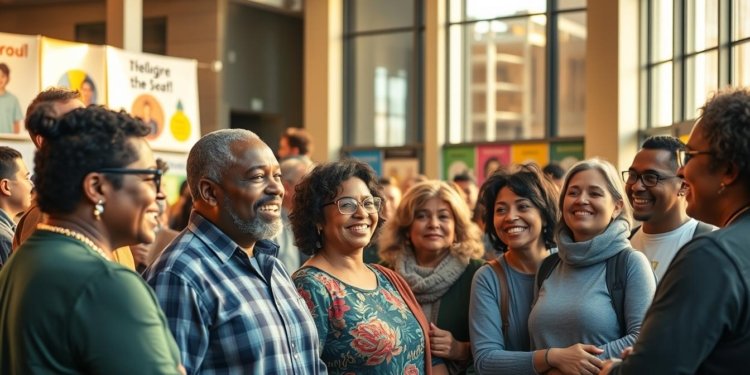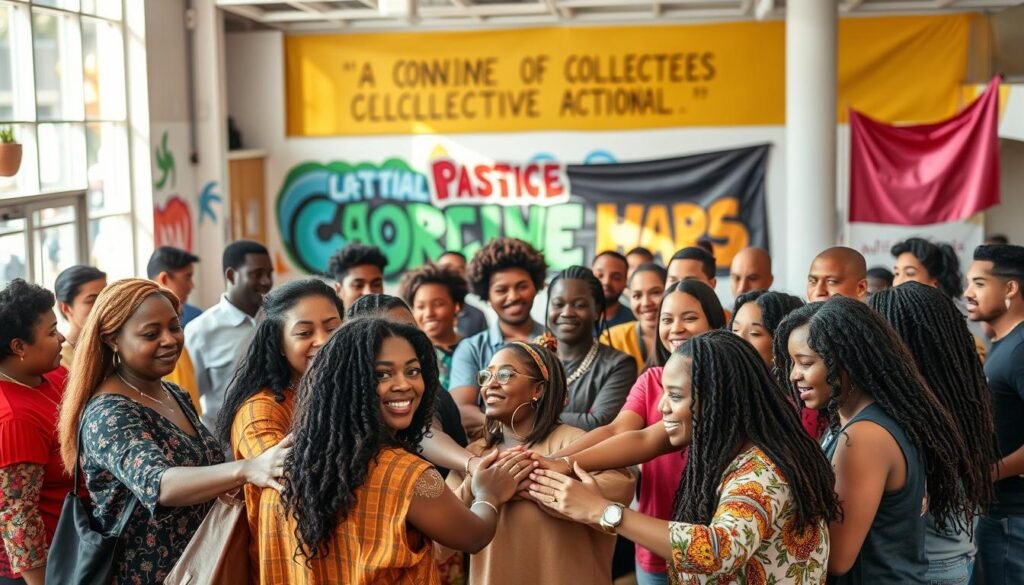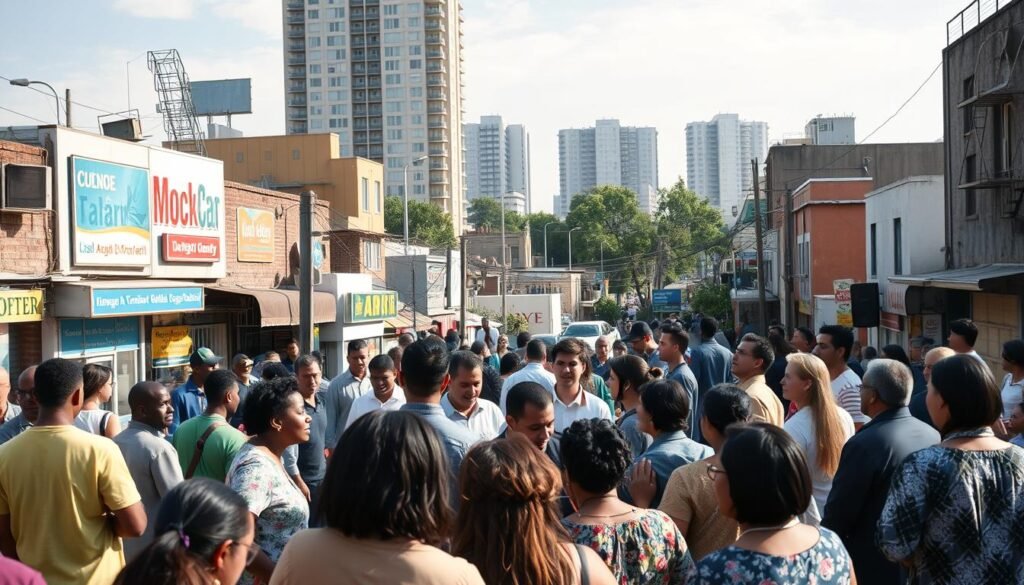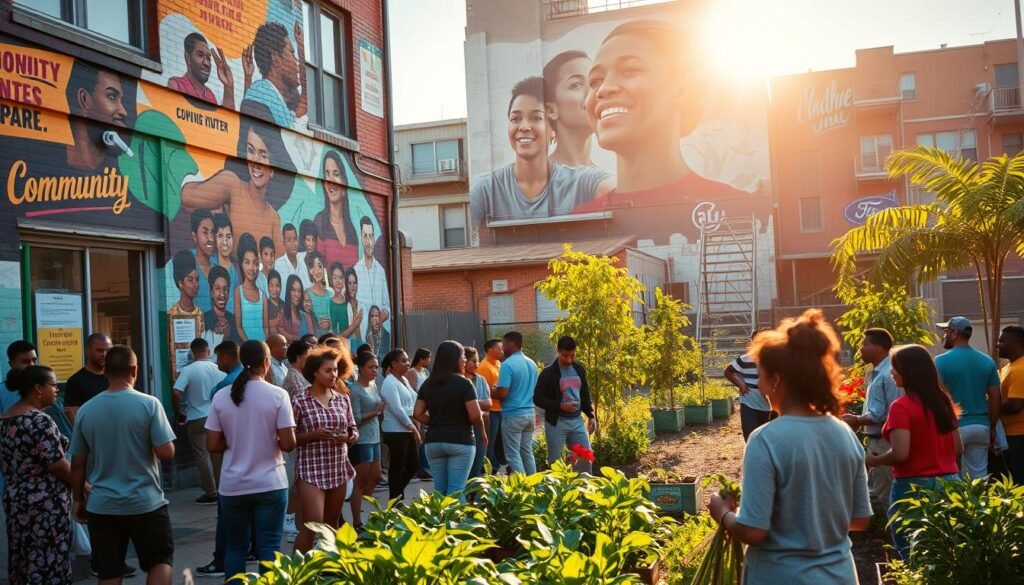What if the key to solving local challenges lies within the people themselves? Community empowerment isn’t just a buzzword—it’s a powerful force driving change worldwide. The World Health Organization defines it as giving groups the tools to take charge of their lives through shared goals and action.
This concept connects local efforts with global movements, creating a ripple effect. From grassroots organizations to international nonprofits, collective action fuels progress. Real-world examples, like the SEWA initiative in India or the Andrea Bocelli Foundation, prove its transformative power.
Empowerment isn’t handed out—it’s built. External support helps, but lasting change comes from within. This idea aligns with the UN’s Sustainable Development Goals, showing how local actions can shape a better future.
Key Takeaways
- Community empowerment boosts local control over life decisions.
- Global and local efforts often work hand in hand.
- Real change starts from within, supported by outside resources.
- Successful examples exist worldwide, proving its impact.
- It plays a key role in achieving global development goals.
What Is Community Empowerment? Defining the Concept
True change begins when people gain control over their lives. The World Health Organization frames this as a three-part process: identifying groups, fostering their power, and enabling action. Unlike traditional aid, it’s not about handouts—it’s about ownership.
Core Principles of Empowerment
Glenn Laverack’s research shows external groups should act as catalysts, not leaders. For example, India’s SEWA taught women banking skills, but members ran the programs. This mirrors Baum’s idea of shared power—renegotiating structures so everyone has a voice.
In public health, the “accompaniment” method proves effective. Trainers guide communities to solve problems like malaria, but locals lead the work. Critical thinking grows through open communication, not top-down rules.
Community vs. Individual Empowerment
Individual training builds skills, but collective action tackles systemic issues. SEWA’s banking initiative pooled resources, helping 2 million women escape exploitation. Spatial groups (like neighborhoods) and interest-based groups (like unions) both drive change differently.
Traditional aid focuses on short-term fixes. Empowerment invests in long-term capacity. The difference? One gives fish; the other teaches fishing—and builds the fishing cooperative.
Why Community Empowerment Matters: Key Benefits
Collective action doesn’t just solve problems—it transforms futures. When groups take ownership of their challenges, the benefits extend far beyond immediate fixes. From economic resilience to healthier populations, the ripple effects redefine what’s possible.
Social and Economic Impact
India’s Self-Employed Women’s Association (SEWA) shows how economic gains multiply. By pooling resources, 2 million women created insurance pools, cutting medical poverty by 40%. Childcare cooperatives further enabled workforce participation, doubling household incomes in some regions.
In Haiti, the Andrea Bocelli Foundation’s water projects deliver 24,000 gallons daily to Cité Soleil. Local control over utilities reduced costs and boosted school attendance. Such initiatives align with UN SDG 4, proving social investments yield education and income benefits.
Strengthening Public Health and Well-being
Health outcomes improve when communities lead. SEWA’s member-run clinics cut preventable diseases by 30%, saving $200 annually per household. OpenLearn studies show participatory programs drive lasting behavior shifts, like malaria prevention in rural areas.
Unlike short-term aid, empowerment builds systems. A vaccine program in Ghana trained locals as distributors, achieving 80% coverage—twice the national average. When people shape solutions, lives improve for generations.
Community Empowerment in Action: Real-World Examples
From trade unions to music programs, real-world initiatives prove empowerment works. These organizations don’t just talk about change—they create measurable impact through local leadership and innovative strategies.
Self-Employed Women’s Association (SEWA)
What began as a labor union for female textile workers in 1972 now empowers 1 million members across India. SEWA’s cooperative banking system slashed loan interest rates from 20% to 5%, freeing people from predatory lenders.
By cutting middlemen from vegetable supply chains, farmers gained 30% higher profits. Childcare cooperatives enabled 60,000 women to rejoin the workforce, proving economic and social progress go hand in hand.
Andrea Bocelli Foundation’s Initiatives
In Haiti’s Cité Soleil, ABF’s water trucks deliver 24,000 gallons daily—a project co-managed by local partners. Their “Voices Of” program trains Ugandan youth in music, blending arts with life skills.
Twelve schools in Italy and Haiti now serve 3,600 students, with 80% showing improved literacy. Urban Naples programs focus on tech access, while rural Uganda prioritizes agricultural training.
Strategies for Effective Community Empowerment
Strategic frameworks turn grassroots efforts into lasting change. Whether improving literacy or securing clean water, proven methods amplify local impact. Here’s how organizations worldwide operationalize success.
Promoting Participation and Collaboration
The 5-phase participation ladder moves groups from consultation to full ownership. Early stages involve surveys, while advanced phases train locals to lead. ABF’s Haiti projects exemplify this—locals now manage 80% of water systems.
Resource mapping identifies gaps in food or healthcare access. In Uganda, ABF used GIS tools to pinpoint schools needing tech upgrades. Digital platforms like WhatsApp groups foster remote collaboration.
Leveraging Education and Essential Resources
Literacy programs require more than textbooks. Trainer cascades—where one expert teaches ten locals—multiply impact. Ghana’s vaccine initiative achieved 80% coverage this way.
Water projects succeed when partners co-design solutions. ABF’s Haitian teams learned pump maintenance, cutting repair costs by 60%. Metrics like school attendance or income growth track ROI.
Sustainability hinges on integration. Checklists ensure programs align with local governance. When strategies adapt, change endures.
Conclusion: Building a Future Through Empowered Communities
Lasting change happens when people shape their own solutions. The WHO links this process to better health and economic stability. Groups like SEWA and ABF prove local leadership creates real impact.
Education, resources, and participation drive progress. Tech helps scale these efforts, while partnerships ensure sustainability. Investing in such models reduces inequality and aligns with global goals.
The future depends on giving communities the tools to thrive. From clean water to literacy programs, every step counts. Start small, think big—and let action speak louder than words.
FAQ
What is the main goal of community empowerment?
The goal is to help groups gain control over their lives by improving access to resources, education, and decision-making. It fosters self-reliance and drives positive change.
How does empowerment differ for individuals versus groups?
Individual empowerment focuses on personal growth, while collective efforts strengthen entire neighborhoods. Both aim to boost confidence, skills, and influence over outcomes.
Can you name a real-world success story?
The Self-Employed Women’s Association (SEWA) in India supports female workers with fair wages and legal aid. Their efforts have lifted thousands out of poverty.
Why is participation crucial in these efforts?
Active involvement ensures solutions reflect local needs. When people collaborate, they create sustainable strategies that address root challenges.
What role does education play in these initiatives?
Learning builds skills and awareness, enabling groups to advocate for themselves. Programs like those by the Andrea Bocelli Foundation show how knowledge transforms lives.
How does this concept improve public health?
By addressing barriers like healthcare access, communities reduce disparities. Stronger networks also promote mental well-being and preventive care.









